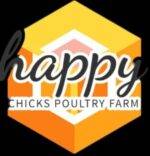The native Kienyeji chicken, which produces both meat and eggs, has long been a mainstay in Kenyan homes. They have a distinctive role in our agricultural environment because of their toughness, resistance to disease, and capacity to flourish in local conditions. Traditional Kienyeji breeds, however, frequently have slower development rates and produce fewer eggs, which limits their potential for business endeavors and even the food security of households.
However, what if you could combine increased output with the Kienyeji’s resilience? Presenting the Improved Kienyeji Chicken, a revolutionary product for Kenyan poultry breeders. These breeds, like the popular Sasso, Kuroiler and Rainbow Rooster, were created especially to provide the best of both worlds: the hardiness that we value in our local chickens, together with noticeably faster growth rates, more eggs, and higher-quality meat.
Let’s examine the amazing advantages of adopting Improved Kienyeji hens in more detail:
Increased Growth Rates: Achieving Market Weight More Rapidly:
The faster growth of improved Kienyeji breeds is one of their biggest benefits. These improved kinds mature much more quickly than traditional Kienyeji, which might take many months to reach a marketable size.
Sasso: Sasso chickens are known for their rapid growth and can achieve a good meat weight in 4–5 months, which cuts down on the amount of time it takes to get them to market.
Kuroiler: Compared to native breeds, these multipurpose birds grow more quickly and to a size that is suitable for human consumption.
Rainbow Rooster: Designed to produce both meat and eggs, Rainbow Roosters also exhibit faster development rates, which enables a higher meat production turnover rate.
Farmers benefit from faster returns on investment as a result of this faster growth, which enables more frequent harvests and higher profitability.
2. Increased Egg Production: More Eggs for Sale and Consumption
Improved Kienyeji breeds provide a significant boost for farmers who are primarily concerned with egg output. Compared to commercial layers, traditional Kienyeji hens produce less eggs annually and frequently exhibit irregular laying patterns. On the other hand, improved breeds are bred to lay more eggs.
Kuroiler: With proper treatment, hens can produce a much more eggs than their local equivalents, frequently surpassing 150–200 eggs annually.
Rainbow Rooster: In addition to being prolific layers, these chickens produce a substantially greater quantity of eggs than native breeds, which greatly enhances household nutrition and possible revenue.
A more steady supply of eggs for families is guaranteed by this enhanced egg production, which also makes Improved Kienyeji a more attractive alternative for small-scale egg enterprises.
3. Improved Quality and Yield of Meat: Additional Benefits from Every Bird:
Better Kienyeji breeds provide higher meat yield and quality in addition to eggs. Compared to traditional breeds, they typically have a higher flesh-to-bone ratio, which means that each bird has more edible meat.
Sasso: Specifically bred for meat, Sasso chickens are highly sought-after on the market due to their well-developed muscles and delicious meat texture.
In addition to being multipurpose, Kuroiler and Rainbow Rooster breeds produce more meat than native varieties, making them a more substantial source of protein.
This improved meat yield translates to more value for farmers selling their birds for meat, increasing their income potential.
4. Preserving Kienyeji’s Hardiness: Designed for the Kenyan Environment
Importantly, improved Kienyeji breeds are created to preserve the natural resilience and disease resistance that make native Kienyeji chickens so ideal for Kenyan conditions. They can survive on a combination of commercial feeds and locally acquired additives, can withstand the frequently harsh weather, and are generally more resilient to common poultry diseases that are common in the area.
One significant benefit is their resistance, which lowers the possibility of disease-related losses and makes them a more dependable and sustainable choice for Kenyan farmers.
5. Flexibility in Various Farming Systems:
Better Kienyeji chickens can be raised in intense and semi-intensive farming systems as well as more expansive free-range settings, which are common in Kenya. Farmers can select a system that best fits their needs and tastes because to this flexibility.
Embracing Kenya’s Poultry Farming Future:
Kenyan poultry production has advanced significantly with the introduction of improved Kienyeji hens. They provide a means of boosting income, enhancing food security, and creating a more sustainable chicken sector by fusing the good qualities of regional breeds with increasing production. Investigating Improved Kienyeji breeds is a smart investment for Kenyan farmers hoping to expand their businesses, increase yields, and meet the rising demand for chicken eggs and meat. They present an opportunity to realize poultry farming’s full potential and support national economic development and nutritional well-being.
